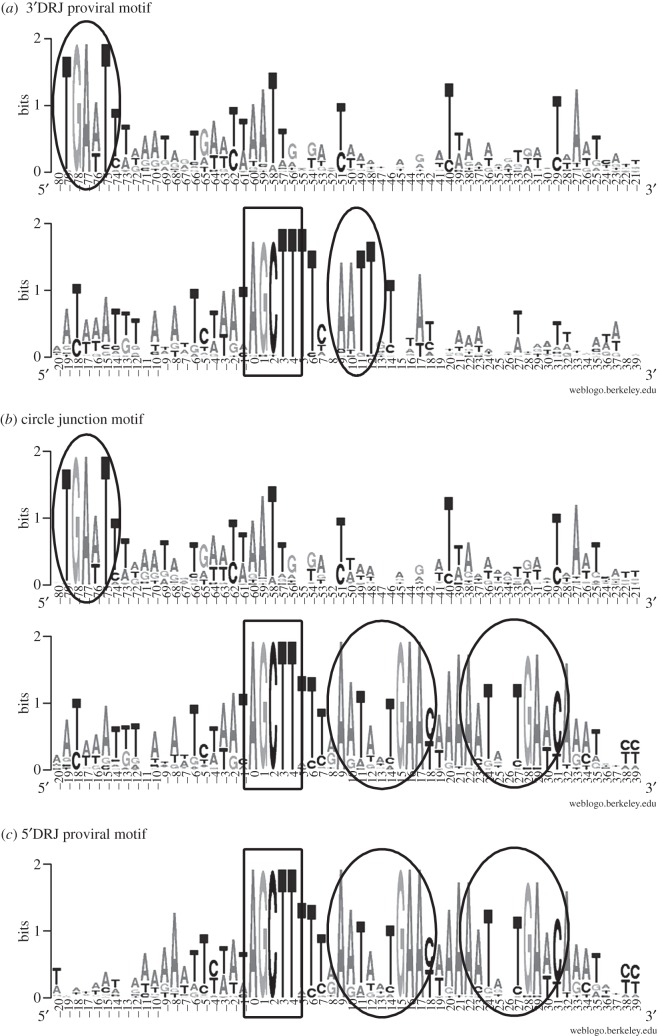Figure 4.
DRJ sequence motifs within C. congregata proviral segments and CcBV circles visualized using WebLogo. Each logo consists of stacks of bases, with one stack for each position in the sequence. The height of the stack at a position indicates the sequence conservation, whereas the height of a base indicates the relative frequency of this base at this position. Note that the circle junction sequence (b) corresponds to a recombined form of the two DRJs within the perfectly conserved DRJ core shown in the black box. Sequences characterizing (a) 3′DRJ and (c) 5′DRJs are circled in black. A 30 bp sequence containing a 13 bp repeat (TTtnAatantGAAyaaAAatnntGAwcAaa) following the 5′DRJ core was found to be conserved, whereas the sequence following the core in 3′DRJ was smaller (TTcnAATTgt). A highly conserved motif (TGAa/tT) was also identified 80 bp upstream of the 3′DRJ core. These graphical representations were generated from independent alignments of 34 5′DRJ, 35 3′DRJ and 35 circle junction sequences (see electronic supplementary material, figure S1).

